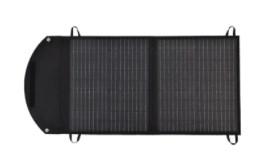In the realm of renewable energy solutions, the 50W Solar Blanket stands as an innovative approach to harnessing the sun's energy while providing additional benefits such as insulation. However, one of the critical concerns for any outdoor application is the product's ability to withstand the elements, particularly water. This article delves into the waterproof performance of the 50W Solar Blanket, exploring its design, materials, and real-world applications.
The 50W Solar Blanket, as the name suggests, is a solar energy harvesting device with a rated power output of 50 watts. It is typically used in various settings, from residential rooftops to commercial installations, and even in off-grid applications. Given its outdoor placement, the blanket must be constructed with robust materials that can endure not only sunlight but also rain, snow, and humidity.
The waterproof performance of the 50W Solar Blanket is primarily determined by the quality of its encapsulation. High-quality solar blankets use a process known as lamination, which involves sealing the solar cells between layers of durable, weather-resistant materials. This not only protects the solar cells from water ingress but also shields them from physical damage and the degradation effects of UV radiation.
One of the key materials used in the construction of 50W Solar Blankets is ethylene-vinyl acetate (EVA) encapsulant. EVA is a copolymer known for its excellent adhesive properties, clarity, and resistance to UV radiation and oxidation. When used in conjunction with a strong backsheet, usually made of polyester or Tedlar, the 50W Solar Blanket can maintain its structural integrity and waterproof capabilities even under harsh weather conditions.
The waterproofing of the 50W Solar Blanket is also enhanced by the use of sealed edges and corners. These areas are particularly vulnerable to water penetration, so manufacturers take extra care to ensure that the edges are well-sealed, often using additional layers of adhesive and protective films. This attention to detail is crucial in maintaining the blanket's performance and longevity.
Testing the waterproof performance of the 50W Solar Blanket involves subjecting the product to a series of rigorous tests that simulate real-world conditions. These tests include the damp heat test, which exposes the blanket to high temperatures and humidity levels, and the water immersion test, which submerges the blanket in water for an extended period. Passing these tests is a testament to the blanket's ability to operate efficiently and safely in wet environments.
In practical applications, the waterproof capabilities of the 50W Solar Blanket are essential for maintaining energy production during rainy seasons. The blanket must be able to continue generating electricity without performance degradation due to water exposure. This reliability is particularly important for off-grid systems, where the availability of alternative power sources is limited.
Moreover, the waterproof nature of the 50W Solar Blanket contributes to its overall durability and lifespan. By protecting the solar cells from moisture-related damage, the blanket can maintain its efficiency and output over time, providing a long-term return on investment for its users.
In conclusion, the waterproof performance of the 50W Solar Blanket is a critical aspect of its design and functionality. Through the use of high-quality materials, meticulous construction techniques, and rigorous testing, these solar blankets can provide reliable energy generation in a variety of weather conditions. As the demand for renewable energy solutions continues to grow, the 50W Solar Blanket stands as a testament to the innovation and adaptability of solar technology in meeting the challenges of our ever-changing climate.
